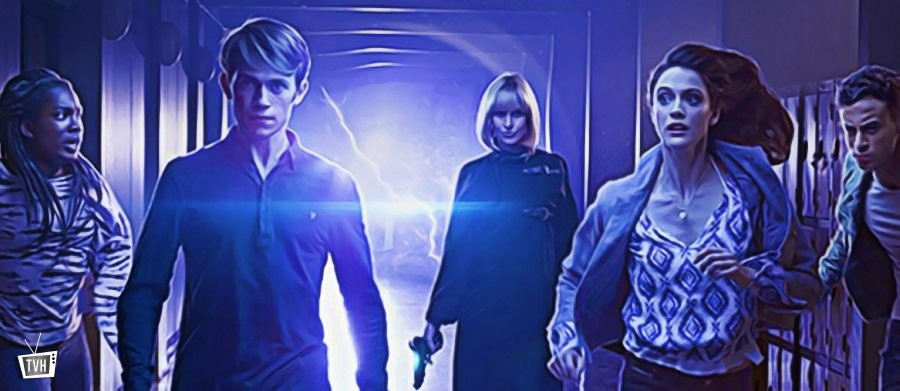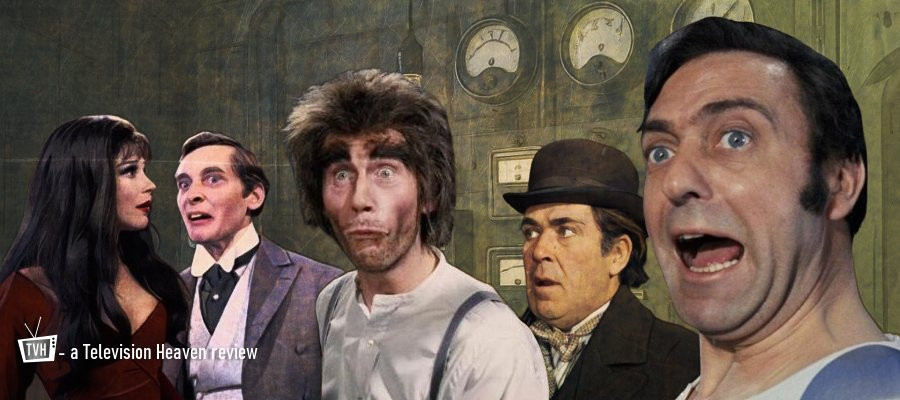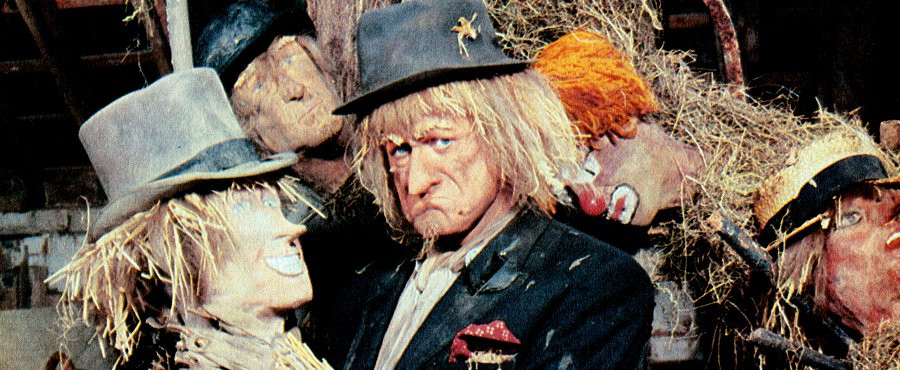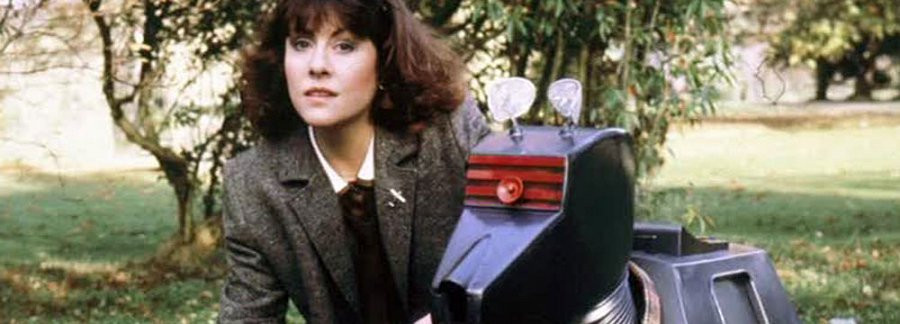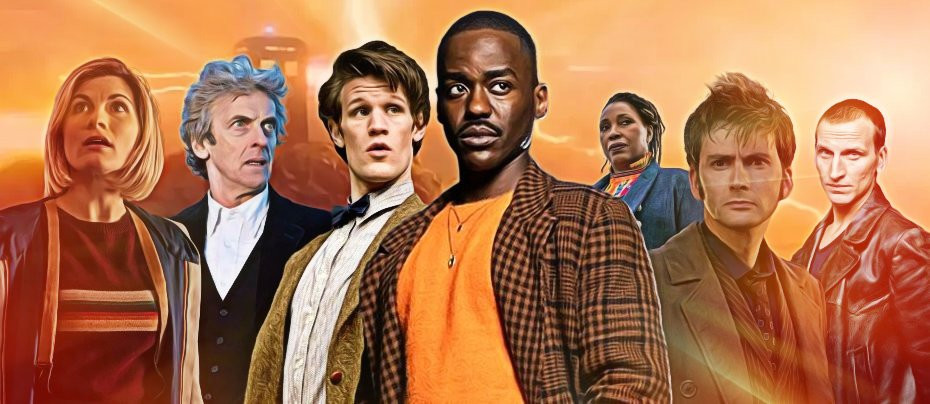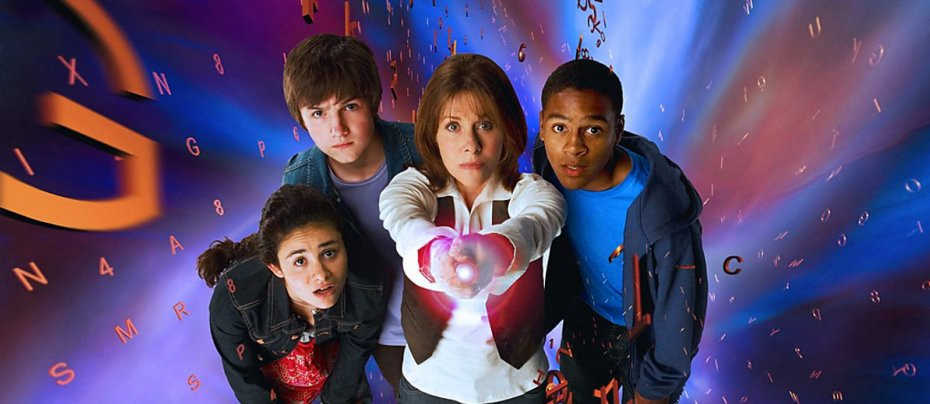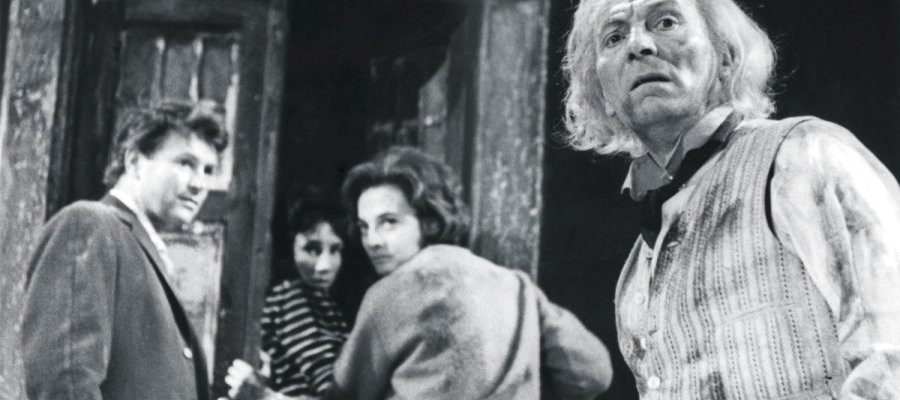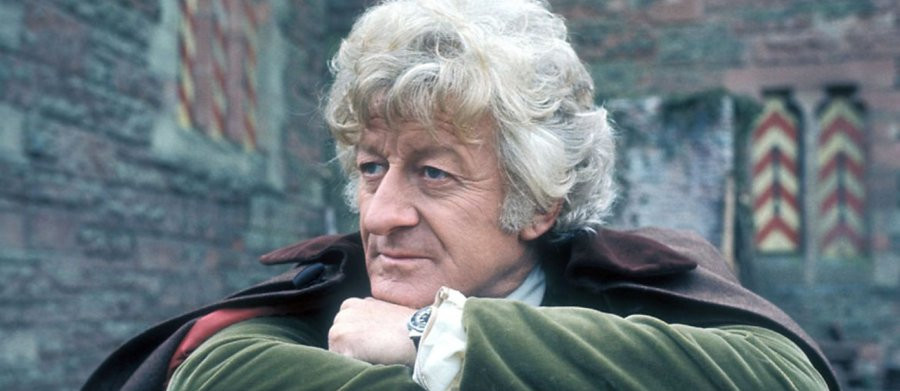
Jon Pertwee
“I’m a great believer in all things being possible. I shouldn’t be in the least bit disconcerted if I came face to face with a bug-eyed monster from outer space.”
For many people in the 1950s and 1960s, Jon Pertwee was the man who did funny voices and pulled silly faces. He made his name on radio’s The Navy Lark and was clearly cut out to be one of Britain’s most versatile comedy actors and best known eccentrics. He took notable cameos in three Carry On movies ...Screaming, ...Cleo and ...Cowboy, and his stage career was also doing well in 1967 when he appeared on Broadway in the comedy There's a Girl in My Soup. But the perception of him as a funnyman hid a deep rooted desire to be taken seriously as a significant actor in drama. When he was approached to take over from Patrick Troughton as television’s Doctor Who it was envisaged that he’d exaggerate the mildly humorous interpretation that his predecessor had laid down. But Pertwee had other ideas and his version of the errant Time Lord was so successful that he cemented the future of the programme that, at that time, was facing an uncertain fate. It’s fair to say that the phrase "sartorial elegance" is synonymous with the third incarnation of The Doctor. It was a term that suited Jon Pertwee, the man, very well indeed.
‘I was born in the Chelsea area of London on 9 July 1919’, he told John Hudson and Stuart Money, members of the Jon Pertwee Fan Club in 1975. ‘My father came from a French Huguenot family, and my real name is Jean Roland Perthuis de Leillevaux.’ During the French Revolution his family had fled France and eventually settled in Essex, England. Jon’s parents were actor-playwright Roland Pertwee and stage actress Avice Scholtz who separated when he was young and left him to be raised by his paternal grandmother. Despite the fact that Jon would later state that his father gave him a good education and taught him to stand on his own two feet, their relationship was not an entirely happy one. "I was influenced by my father. He was an overpowering man. He had so many talents. As well as his acting and writing abilities, he was a brilliant conversationalist and could do anything...fisherman, painter, and he knew all sorts of quaint, unexpected things. I admired him intensely, but he was a lousy father. Rotten. He seemed to find it terribly difficult to show love. His attitude to me was best summed up in a remark he made at his club one day when I was just getting known. “Are you the father of Jon Pertwee?” he was asked. “No, Jon Pertwee is my son,” he replied. He was rather wrapped up in himself and his own life. I was the youngest of three brothers and always felt a bit left out.’
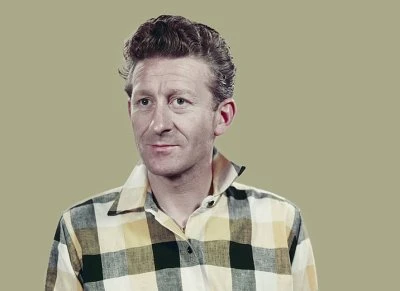
Jon’s education had several highs and lows. On two occasions he was expelled from the public schools he was sent to. ‘I was expelled because I revelled against spotty boys calling me back from my music lesson when I’d have to run a quarter of a mile to their little rooms where they’d say: “Make me a piece of toast”. I would say, “Why can’t you make if yourself, are you crippled?”, for which I’d be soundly beaten.’ After being badly beaten at the end of term Jon retaliated by grabbing a cane and hitting the other boy across the face. ‘That, of course, was the end of my career as a public schoolboy.’ After this, Jon went to several boarding schools but had no thirst for education. During school holidays he returned to the family home in Dulverton in the Exe Valley, near Tiverton. ‘My father was a keen sportsman and we had our own horses and rode to hounds and fished and shot. We had enormous physical freedom.’
With further education seemingly off the agenda, Jon joined a circus. ‘I had to drive a converted Austin Seven on the Wall of Death, with a lion sitting strapped to a platform behind me. It was a very old lion so you had to kick it where it hurt to make it roar. Only the boss didn’t want it roaring. “Folks’ll see it ain’t got no teeth!”, he used to moan. ‘
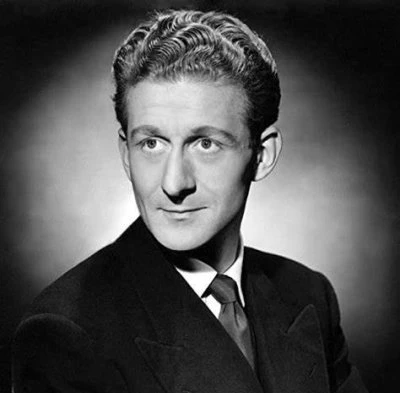
Deciding that he wanted to be an actor, Jon managed to get enrolled at RADA. But that too ended in expulsion. He was falsely accused of writing a rude remark about the principal teacher on a lavatory wall. ‘I told my father, who was absolutely furious! He rang the principal saying that he was going to sue him for defamation of character, for libel and every other charge you could think of. He said he was going to employ the greatest graphologist he could find to prove it was not my writing.’ Fortunately, the principal backed down and Jon was given a ‘stay of execution.’ But it was only a temporary reprieve. At the end of that term, Jon was cast in two roles in a play. In the first act he was the murder victim, in the second he was the detective investigating the case. Judging the play was Noel Coward, who thought the parts were played by different actors. When he was told that Jon played both parts, he asked to meet him. “Ah yes, Pertwee. You’re Roland’s son, no doubt. Very good, very promising.” At the end of that term Jon was expelled. The reason? They told him he wasn’t cut out for the theatre.
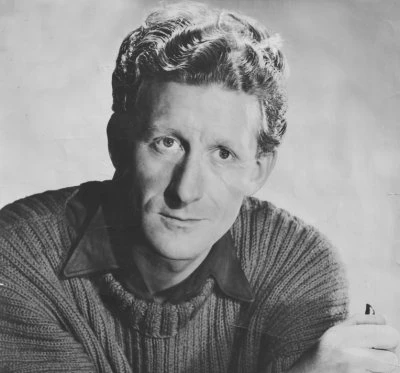
In 1937, Jon, now 18 years of age, joined a travelling theatre company before joining the Rex Leslie-Smith Repertory Company performing at the end of the West Pier in Brighton. But by the following year War had broken out and eventually Jon was called up by the armed forces and joined the Navy. He was transferred from HMS Hood only shortly before it was sunk by the Bismark - and among various postings worked briefly in Naval Intelligence at Westminster alongside future Prime Minister Jim Callaghan. As part of his Intelligence work Jon was sent to see a radio show being run by Lieutenant Eric Barker. ‘It was rumoured to be insulting leading figures in the Government, and I was sent to put a stop to any risqué jokes. I sat in the auditorium and Eric said, “I want somebody to shout out these lines”. I said, “I’ll do it”. He looked at me and said, “Who are You?”, and I replied, “I’m a spy!” I told him that I’d been sent to check up on him, but if he let me say the lines, I’d be a very bad spy. So he let me say the lines.’
Barker was suitably impressed and invited Jon back the following week. He accepted and ended up staying with Barker for nine years. It was Jon’s big break into showbusiness.
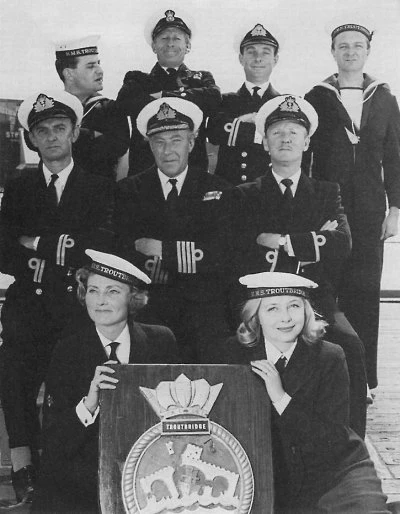
Later, Eric Barker bought the rights to Mediterranean Merry-Go-Round, which later still became Middle East Merry-Go-Round, the show expanded to all forces 'serving afloat or overseas' from January 1945. There were three versions of Mediterranean Merry-Go-Round one each on the Navy, Army and Air Force. The Air Force version became Much Binding in the Marsh which was set in a remote fighter base in Laughter Command, written by its stars, Flight Lieutenant Richard Murdoch and Wing Commander Kenneth Horne. The Army version, Studio Stand Easy, was written by its star, Sergeant Charlie Chester whose 'happy band of Other Cranks' from Stars in Battledress included Arthur Haynes. The Navy version became Waterlogged Spa, in which Jon played a postman (on whom he later based the voice for Worzel Gummidge), who's catch phrase was "What's it matter what you do as long as you tear 'em up!" and also Weatherby Wett, the Chapel Organist.
On the 29 March 1959, BBC radio launched a new series, and probably the best remembered of the shows that sprang from Mediterranean Merry-Go-Round, it was called The Navy Lark. The show ran for fifteen series until 1976 making it the second longest running radio programme the BBC has made. There was a spin-off film version in 1959. Jon asked for two additions to the team, which he got: Dennis Price and Leslie Phillips. ‘My voice man was Ronnie Barker. Ronnie left after a while because he hadn’t time to do it. He was becoming much too important in the business.’
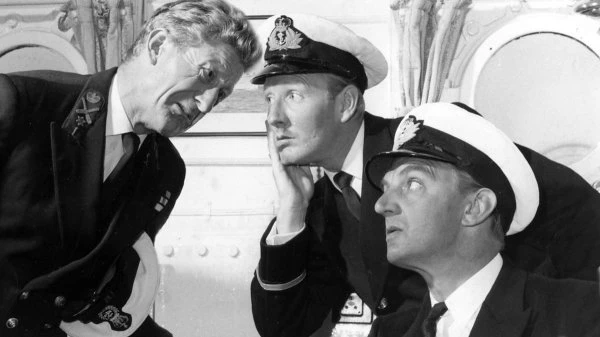
Over the course of the radio runs, Jon supplied forty-two different voices for the characters he played. ‘I find it easy to imitate accents, but I can’t copy people’s voices. I have a set of gramophone records at home and if I’m required to learn an accent, I put them on. It takes me only about fifteen minutes to pick up the way of speaking.’ Jon maintained nostalgic feelings for The Navy Lark throughout his career. During his time on the radio Jon only appeared infrequently on television or in films. ‘My earliest film of any merit was Murder at the Windmill. It was about the Windmill Theatre and I played a detective (the film was released in 1949 and Jon appears to be billed as Jon Pertwer – almost certainly a simple typo, which according to some sources is also how he became Jon without an ‘h’). Occasional television appearances came in shows such as Ivanhoe, The Dickie Henderson Show, and The Avengers. An early appearance on the children’s series Small Time in which Jon appeared as part of a folk music trio caused quite a stir. After they had finished their set one of the presenters, Wally Whyton, turned to one of the resident glove puppets, Fred Barker (voiced by Ivan Owen, the man who went on to create the distinctive Terry-Thomas-like voice of Basil Brush) and said, “That was a nice song”, to which Fred replied, “Yes, it’s nice to see the old folkers.” A number of viewers mis-heard the remark and jammed the channel’s switchboard with complaints about the foul language used on a children's programme!
Having created the role of the brothel keeper, Lycus, in the stage version of A Funny Thing Happened on the Way to the Forum, Jon was disappointed when he was not asked to play the part in the movie version. Instead, the part went to Phil Silvers. ‘Jon Pertwee meant nothing to the general public abroad, so they gave me a tiny part instead.’ But when he arrived in Madrid for the filming the producers approached him to play the part. “Phil Silvers has got religious mania!” they told him. “He’s jumping up and down in his bed relating the Lord’s Prayer because nobody recognises him in Spain.” But the second assistant director (‘I could kill him’) went to the director Dick Lester and said, “I can get Phil Silvers on the set for you tomorrow.” The assistant director went to see Phil Silvers and told him he was about to be replaced. The following day Silvers turned up at half-past-six in the morning.
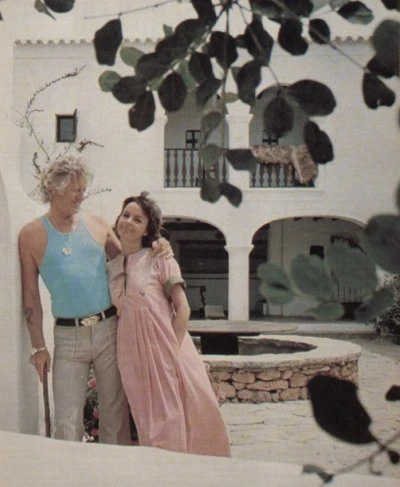
By now, Jon had married and divorced the actress Jean Marsh and remarried Ingeborg Rhoesa, who would remain by his side for the rest of his life. ‘I met her in a place called Kitzbühel, an Austrian Ski resort. Her father was a very eminent financier in the West German government.’
In 1966 Jon made the first of twenty appearances on the children’s story-telling series Jackanory, although he was still not picking up regular television work. But in 1968 he was approached by Jimmy Perry and David Croft to star in a new BBC sitcom set during the Second World War. He turned the part down and it went, instead, to Arthur Lowe (although Jon’s cousin Bill Pertwee accepted a role in of the air-raid warden in the series - Dad's Army). It was while he was recording The Navy Lark that fellow actor Tenniel Evans told him that Patrick Troughton was leaving the role of Doctor Who and suggested that Jon put himself forward for the part. Uncertain that he’d fit the part, Jon took time to consider the possibility but eventually phoned up his agent. ‘There was a terrible pause. I said “Alright, forget it. I suppose it wasn’t a very good idea.” He answered, “No, it’s just come as a bit of a shock. But I’ll ring them up.” He phoned the BBC and put my name forward. Again, there was a long pause at the other end of the phone. My agent said, “Sorry, we’ll forget about it.” The reply he got from the other end of the phone was, “May I read you our short list?” So he read the list.’ At the top of the list was Ron Moody. Second was Jon Pertwee. Moody, apparently, had already turned the part down.
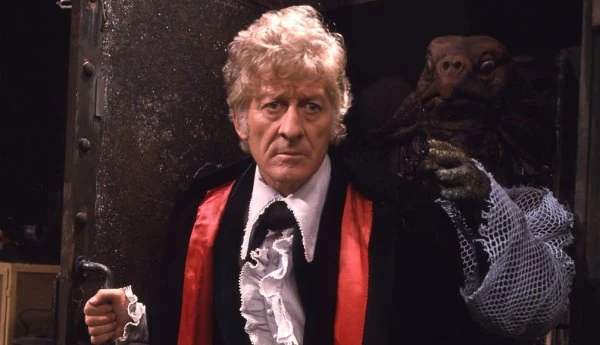
At first the producers had the idea to ramp up the humour in Doctor Who. The previous series with Patrick Troughton had a much darker tone and it was getting criticism in some quarters for episodes such as The Mind Robber (part one), The Invasion (particularly the Cybermen appearing out of London’s sewers) and Troughton’s final story The War Games. And so it was thought that with Jon Pertwee’s penchant for humour, his flexible features and his extraordinary vocal range, he would bring a more whimsical quality to some of the darker moments of the stories. However, Jon, who as previously mentioned, wanted to be taken as a more serious actor had other ideas which was helped by the fact that the production team for Troughton’s last season were leaving the series and the new producer, Barry Letts, was much more attuned to Jon’s idea of how the Doctor should be. The only thing Jon wasn’t sure of was how to play the part. ‘I went to see Shaun Sutton (the Head of Drama at the BBC), a very old friend – we’d started in the business together. I said, “How do you want this played?” and Shaun replied, “Well – as you.” I said, “What is me? I don’t know. I had always played character parts. I had never played “me”. He told me, “We know what you are, that’s why you’ve been cast, and if you play it as you, it will come alright.” So Doctor Who was me!’
The next step was to decide the look of the new Doctor. Troughton had played the part as a sort of cosmic hobo, wearing ill-fitting clothes that always seemed just one size too large, and sporting a messy Beatle-style haircut. Jon and the production team decided that the new Doctor’s look should be exactly the opposite. Jon’s costume was designed by Christine Rawlings who was influenced by Gerald Harper’s appearance in Adam Adamant Lives!, the story of a Victorian gentleman who is frozen in ice and awakened in 1960s swinging London. Despite his new and unfamiliar surroundings Adamant remained in period costume, complete with cloak. It was a look that Jon had already considered himself.
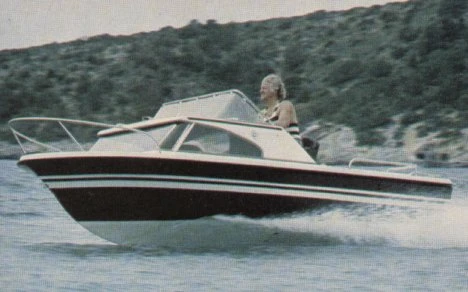
With the new series there would also be another major change. It would be the first to be filmed in colour, therefore, the look and stylising would need to be revamped to show the show off in its best possible way. As the series progressed, Jon was indulged in his love of gadgets, something that would hopefully hook a slightly older audience who were now used to the gadgetry seen in the successful movie franchise of James Bond movies. There was also a need to pump up the action somewhat. Jon’s first craze was for motorbikes, which started when he was 15 and ended (temporarily) when he drove his first bike, on its first journey, into a stone wall. Later there were racing cars, succeeded by go-karts, followed by a return to the bike, both push and motorized. Doctor Who would become an extension of his real-life character. ‘My idea of relaxation is riding a motorbike, a bit of water skiing, or a nice burn-up in the jet-boat. My wife thinks I'm demented.’ On interviewing him for a TV Times article in 1974, Ian Cotton wrote: ‘Even off-duty that air of mystery is maintained. Hooked nose and noble eyes he is an amalgam of the Count of Monte Cristo and Dan Dare. But the clincher is the hair - streaming back in a veritable Niagara of waves and ringlets, it contributes to his characteristic air of surprise.’ That same article caught up with the Pertwee’s in their villa in Ibiza. His wife was also interviewed: "All actors are schizophrenic but maybe Jon is more than most. For an audience or for people he doesn't know very well he'll still act the buccaneer. But his real love is his home and his children. Unlike some people in the theatre, he doesn't feel the need to chase around keeping up with the theatrical Joneses. In Ibiza he really relaxes. He goes into a sort of coma when we've been there for a while. He often falls asleep over his soup."
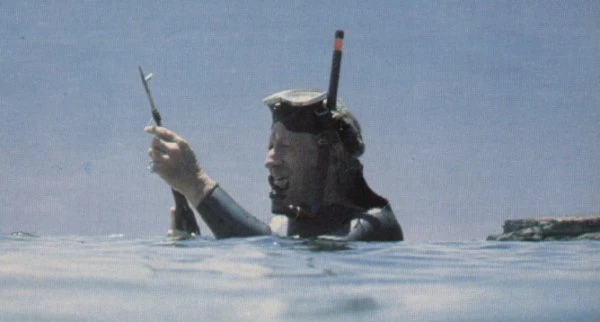
The ratings for Jon’s Doctor Who held at around 8.2 million for his first season, peaking at 9.3 million. By the time he decided to leave the show his audience was still holding around the 9 million mark, peaking at 10.1 million for the first episode of his last adventure Planet of the Spiders. Interviewed on his decision to leave the series, Jon said, ‘I felt the team was breaking up (Roger Delgado, who played the Doctor’s arch enemy The Master had been tragically killed in a motoring accident, his long time companion Jo Grant, played by Katy Manning had already departed and producer Barry Letts had decided to move on to other things) and I decided I would change with it. I have no vertebra between my fifth and sixth lumbars. I have been in pain for the last two Doctor Who series. I’ve enjoyed doing the part but I like to keep in lots of mediums – a jack of all trades but a master of none.’ However, he left the door open saying that he’d be more than happy to play the Doctor again if the BBC wanted him.
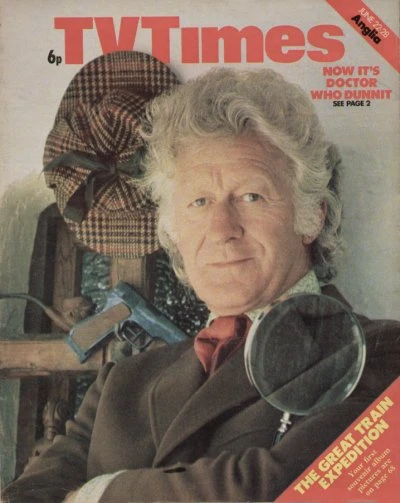
Jon didn’t have to wait long for his next gig. ITV had been running the series Whodunnit since 1972. The series was a mock-game show with a celebrity panel who would watch a short murder-mystery drama before trying to establish who the culprit was. The first series was hosted by Shaw Taylor, a natural choice as he was known to viewers for fronting the police-appeal series Police Five. The second season saw Edward Woodward in the master of ceremonies chair. Another logical choice as he was famous for playing the British down-at-heel spy David Callan. But when Woodward was unable to film the third series (1974) due to other work commitments, Jon took over. The logic here being that Jon was a familiar face to millions of viewers and in constant demand for personal appearances and charity work. He stayed on the series until its eventual demise in 1978.
When Whodunnit finished it wasn’t long before Jon was back on our screens again, reinventing yet another iconic character.
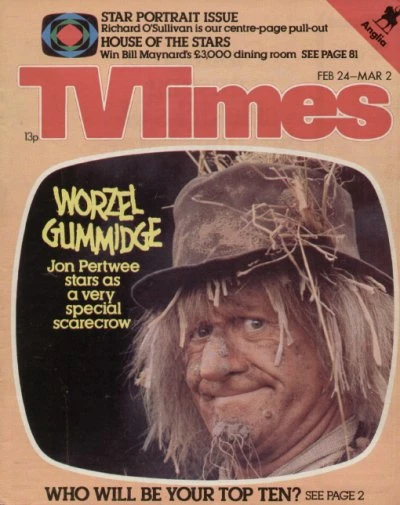
Worzel Gummidge, a walking, talking, irascible scarecrow, first appeared in the novels of Barbara Euphan Todd in 1936. It was the first story book published by Puffin Books. Having become a radio star in the 1940s Gummidge came to television for the serial Worzel Gummidge Turns Detective in 1953. After the death of Todd in 1976, screenwriters Keith Waterhouse and Willis Hall bought the rights, hoping to make a movie version about the scarecrow equivalent of the Peasants' Revolt, with the scarecrows rising up against farmers who were going to burn them when the farming season had finished. Jon was approached to play the lead character, which he readily agreed to. However, Waterhouse and Hall were unable to secure the funding needed to make a full-length feature. Encouraged by Jon, the writers wrote a pilot for a television series and took it to Shaun Sutton, then Head of Drama at the BBC. Sutton turned down the project. Philip Jones at Thames Television was approached, and he too turned it down. Jon was beginning to lose faith in the project when Southern Television's Lewis Rudd heard about it and enthusiastically agreed that his company would make the series.
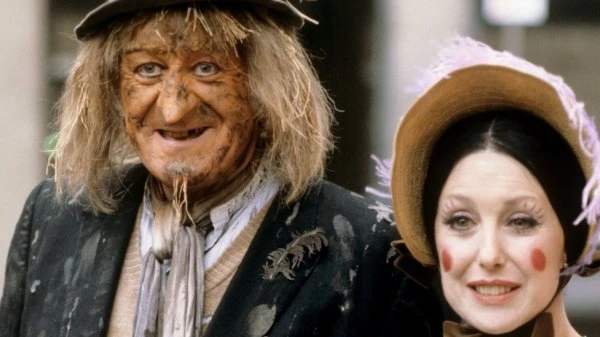
Alongside Jon was Una Stubbs as Aunt Sally, a life-size fairground doll and Worzel's femme fatale, who considered herself far too superior for the attentions of a common scarecrow. This was a change from the original stories where Aunt Sally is Worzel's aunt. In the books Worzel's love interest is Earthy Mangold. The Crowman, who made Worzel, was played by Geoffrey Bayldon, better known for his starring role as the title character of Catweazle. Living in Ten Acre Field near Scatterbrook Farm, Worzel would often visit the nearby village where he'd get into all sorts scrapes and mishaps thanks to his mischievous nature. He befriended two children, brother and sister John and Sue Peters (Jeremy Austin and Charlotte Coleman), who often tried to clear up the messes he created. Also appearing in the series were (either as regular characters or guest stars) Megs Jenkins, Michael Ripper, Joan Sims, Barbara Windsor, Bill Maynard, David Lodge, Mike Reid, Connie Booth, Bernard Cribbins, Beryl Reid, Jimmy Jewel, Lorraine Chase and Billy Connolly.
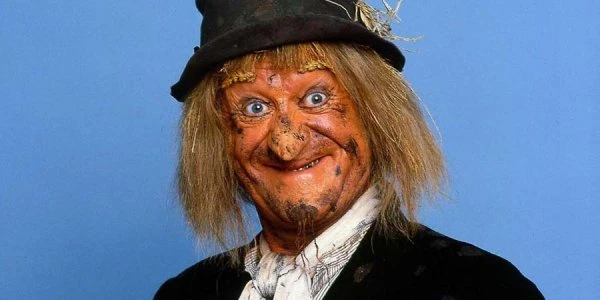
Worzel Gummidge, screened Sunday afternoon teatime, was an immediate hit and became essential family viewing. A total of four series and an extended Christmas special were made between 1979 and 1981 and the likelihood of more being made were only scuppered when Southern Television lost their franchise to broadcast on ITV. The new franchise holder, STV, decided not to renew the series in spite of complaints from viewers and a press campaign by a number of national newspapers. Several attempts were made by Waterhouse, Hall and Pertwee for it to be produced independently by Southern, but these all fell through. The show remained in limbo until Channel 4 commissioned Worzel Gummidge Down Under in 1986, which was shot on location in New Zealand; It ran for two series. In a poll conducted by Channel 5 the series was ranked among the top 50 greatest British children's programmes of all time.
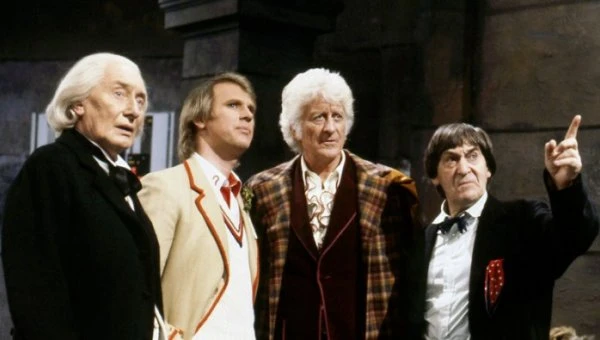
In 1983, Jon returned to televised Doctor Who for the 20th Anniversary Special, The Five Doctors. In this story he was teamed up with former companion Sarah Jane Smith (Elisabeth Sladen). In a 1991 interview with Doctor Who Magazine, Jon spoke of the reunion: ‘When we did The Five Doctors, Lis Sladen and I were concerned about how we were going to work together, not having done so for some years. We went up on top of a mountain in Wales and did our first scene and reeled it off in one take, with absolutely no problems at all. It was as if we had never stopped working.’ Jon also appeared at the 20th Anniversary Celebrations at Longleat House over Easter weekend in April 1983. The event drew people in their thousands, far more than the organizer ever imagined and many (including myself) were turned away after having trekked down to Warminster, Wiltshire.
Between 1983 and 1986 Jon lent his voice to the character Spotty in the children’s animated series SuperTed, followed in 1989 by The Further Adventures of SuperTed, but he was still not done with Doctor Who.
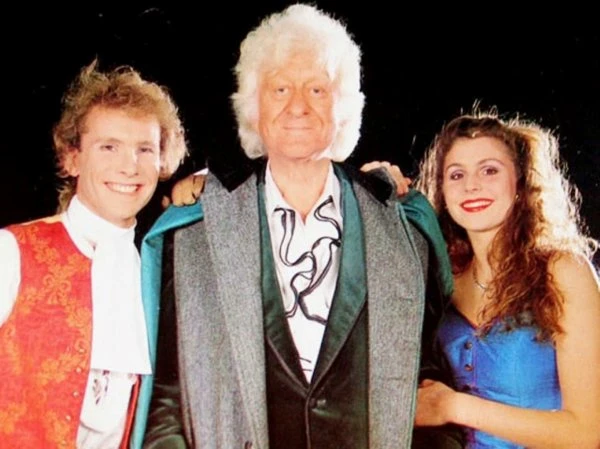
Doctor Who – The Ultimate Adventure was a 1989 stage play written by Terrance Dicks and backed by the series producer at the time, John Nathan-Turner. Jon reprised his role as the third Doctor for the initial run. The show’s run began at the Wimbledon Theatre in London on 23 March 1989. Talking about the play in 1990 Jon said, ‘I enjoyed the tour very much (Aberdeen, Glasgow, Liverpool, Bristol, Wales, Birmingham, Manchester, Essex and Oxford), but twelve weeks was plenty for me. At my age, living out of suitcases gets very exhausting after a bit. There were plans to take the show to Australia. I was going to take a few months off and then do three months there, then come back to London for a Christmas season.’ But any thoughts of travelling half way round the world were scuppered by Jon’s wife, Ingeborg. “I don’t want to travel around any more.” She told him. “”I’ve been dragged around like a gypsy for years.”
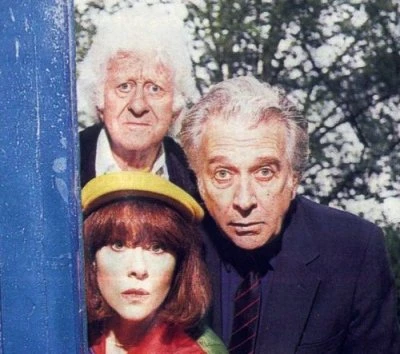
Jon again returned to Doctor Who for a Children in Need appeal in 1993 in a filmed special called Dimension in Time, which consisted of two 5-to-7-minute segments and featured previous Doctors. The special was made in 3D and readers of the Radio Times were given 3D glasses to wear so they could get the full effect. The story was regarded by one critic as ‘a dreadful travesty of a Doctor Who story.’ Still, it was for charity and helped raise pots of money for good causes. But by now Doctor Who was no longer on our TV screens. In 1989, the BBC had concluded that the show had become old and tired and decided to ‘rest’ it indefinitely. But one thing the special did prove was that there was still a great deal of interest in the series and that same year Jon was asked to reincarnate the third Doctor for a BBC Radio 5 series titled The Paradise of Death. This again teamed Jon with Elisabeth Sladen as well as Nicholas Courtney who reprised his role as Brigadier Lethbridge Stewart. In 1996 the team were reunited for a sequel, on BBC Radio 2, called Doctor Who and the Ghosts of N-Space. The second was not as well received as the first.
In 1993 Jon appeared in The Airzone Solution, a direct-to-video science-fiction drama produced by BBV, co-produced with the BBC Film Club. The film was shot on videotape on a very low budget. It starred former Doctors Peter Davison, Colin Baker and Sylvester McCoy as well as Nicola Bryant who had played Peri, the companion to Bakers' incarnation of the Time Lord. The story takes place in a future Britain where pollution has reached a point where the populace must often wear filtration masks when they venture outside.
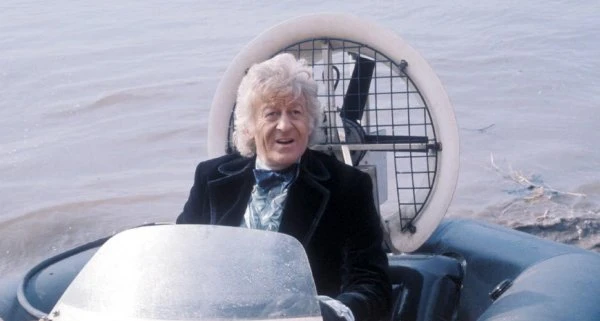
Following The Paradise of Death Jon toured the UK with a retrospective one-man show, Who Is Jon Pertwee?, in which he looked back light-heartedly over his long career in broadcasting. Meanwhile he remained very active on the convention circuit (the first of which was organised in 1977, by the Doctor Who Appreciation Society) attending numerous Doctor Who gatherings around the world. But the strain of travelling eventually took its toll. In 1995, Jon made his last scripted television appearance as General Von Kramer in the US made TV Movie The Adventures of Young Indiana Jones: Attack of the Hawkmen. Taking a short break from his one-man show, and visiting Connecticut in the USA in May 1996, Jon suffered a heart attack whilst he was asleep. It proved fatal. His body was returned to England where he was cremated at Putney Vale Crematorium with a toy Worzel Gummidge affixed to the coffin, following the instructions in his will. He was survived by his wife Ingeborg, and two children, Sean Pertwee and Dariel Pertwee.
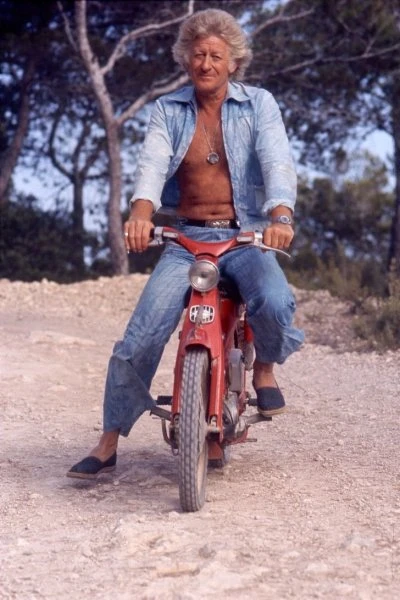
There is no question that Jon Pertwee’s interpretation of The Doctor brought the series to new heights of popularity in the early Seventies. Without him the series might not have survived into the new millennium. He put his stamp on everything he gave voice to or appeared in from the nautical numbskulls of The Navy Lark through the ever-dashing Edwardian styled gentleman of action in Doctor Who, to the scraggly scarecrow Worzel Gummidge. Broadcaster David Jacobs summed it up perfectly when he said: " Jon was one of the funniest men that Britain has ever produced, one of the greatest character actors, he was marginally eccentric, he lived his life to the full."
You may also like:
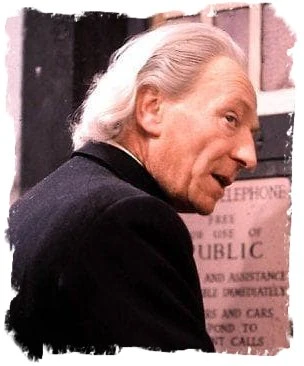
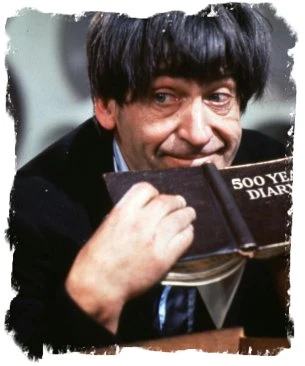
Published on September 4th, 2021. Written by Laurence Marcus for Television Heaven.


